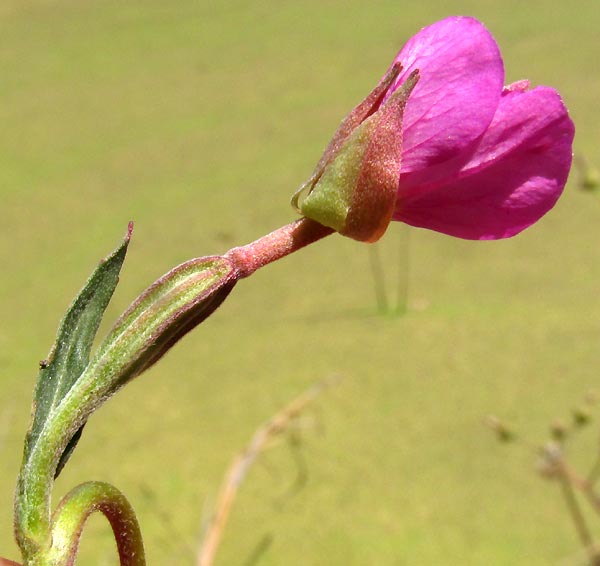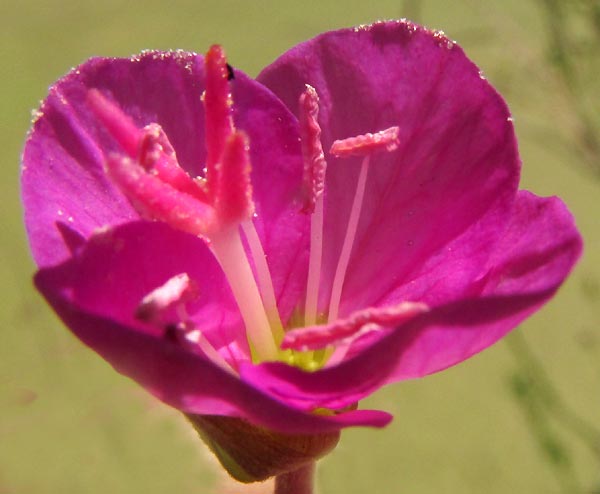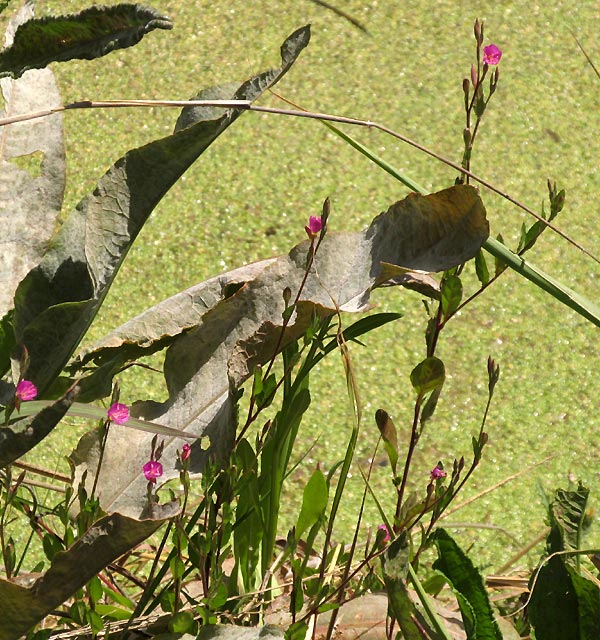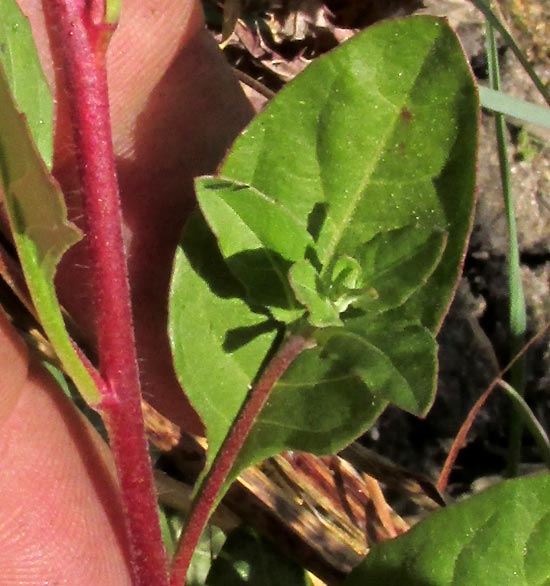Excerpts from Jim Conrad's
Naturalist Newsletter
entry dated March 31, 2022, issued from near Tequisquiapan, elevation about 1,900m (6200 ft), ~N20.57°, ~ W99.89°, Querétaro state, MÉXICO
ROSE EVENING PRIMROSE FLOWERING

During the latter, hotter, sunnier part of the dry season when most of the landscape is parched crisp and dusty, along the steep, weedy banks of a house-sized pond dug deeply enough to still have water in it after most water bodies here have dried up, the above blossom offered a surprising burst of bright color. The color-burst was small, though, the petals of the flower only about 8mm long (0.3 inch). The little flower displayed distinctive features, though.
Note that immediately below the corolla, the 4 greenish sepals tend to have their outer points united into 2 pairs. Beneath the sepals a slender floral tube connects with a green, club-shaped, somewhat 4-winged ovary, the future fruit. Having the calyx and corolla attach atop the ovary, this is an inferior ovary, a very important feature to notice during the identification process. More distinctive field marks are apparent when the blossom is viewed from above:

The deeply 4-lobed, starfish-like, purple stigma atop the white style emerging from among 8 stamens is unusual. The corolla consists of 4 petals. In the picture below you see what the whole plant looked like among some large Smooth Dock leaves, and a background of duckweed floating on the pond's surface.

The plants produce pink stems, with the pinkness extending partway up the simple, alternating leaves' midribs.

All the above features are typical of the more than 120 species of herbaceous plants called evening primroses, members of the Evening Primrose Family, the Onagraceae. It's the Rose Evening Primrose, OENOTHERA ROSEA, possibly the most widely distributed and commonly occurring of all Evening Primrose species. Its success is largely due to its adaptations enabling it to thrive in disturbed habitats with sufficient moisture, and its being cultivated and escaped throughout much of the world. Probably it's native to Central America, but in the Americas occurs from the southeastern US south to Peru and Argentina.
In Spanish this species commonly is known as Hierba del Golpe, more or less "Hit-Plant," because of its traditional medicinal use, especially for treating hard blows. That name is shared with some other evening primrose species as well, which isn't surprising since chemical compounds often occur throughout particular plant families. A 2009 study published by Yazmín K. Márquez-Flores and others, Actividad antiinflamatoria de los extractos acuoso y metanólico de Oenothera rosea L'Hér. ex Ait en la rata, reported its use to treat inflammatory, renal and bacterial diseases. They concluded that the extracts "induced anti-inflammatory activity and it was considered not toxic."